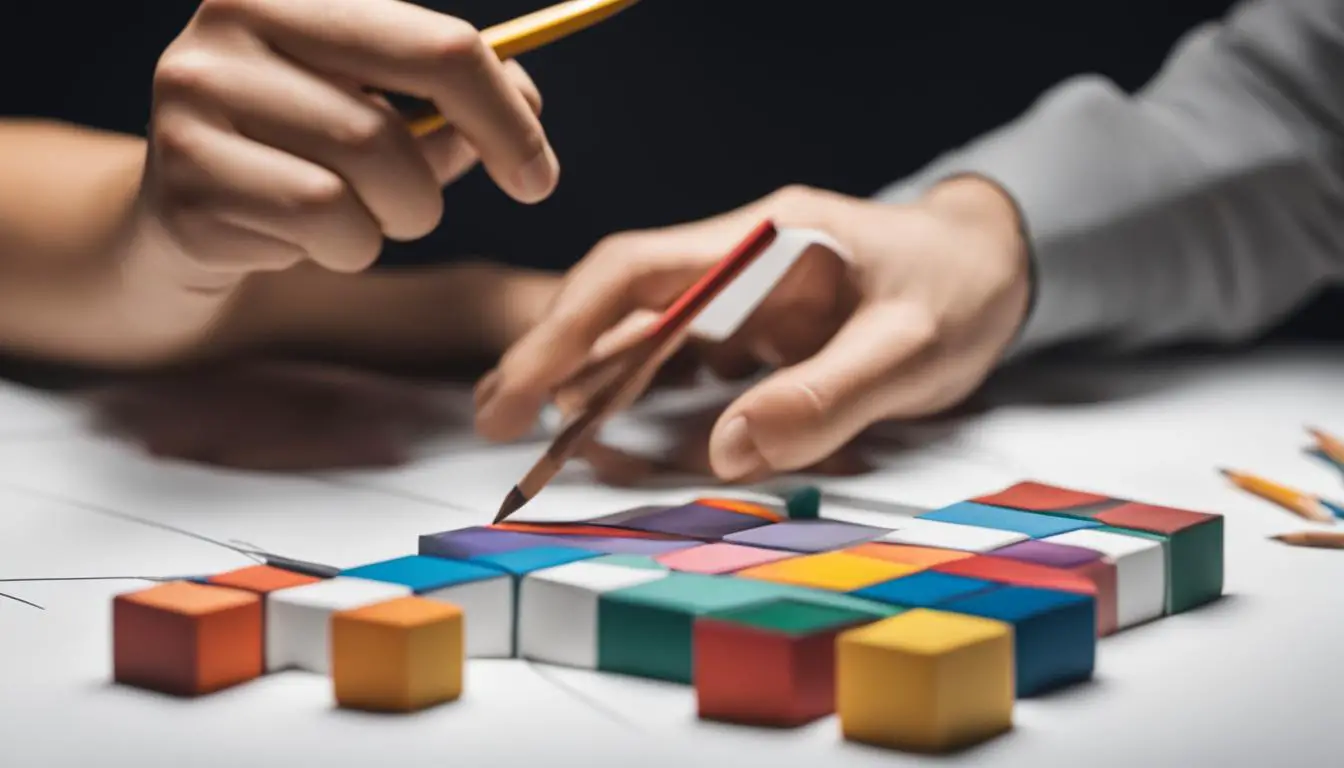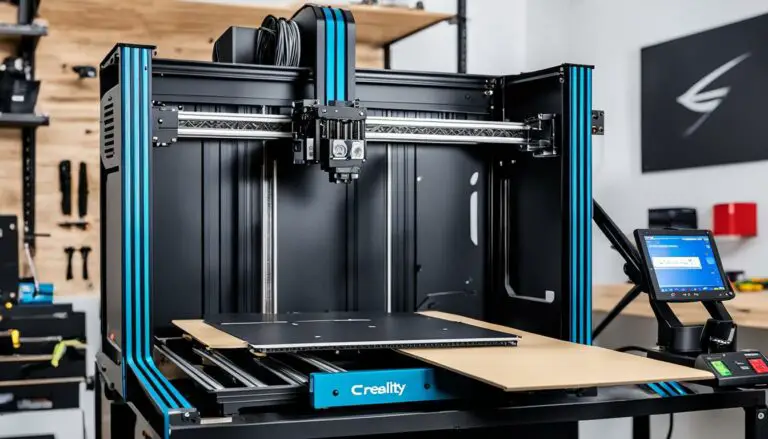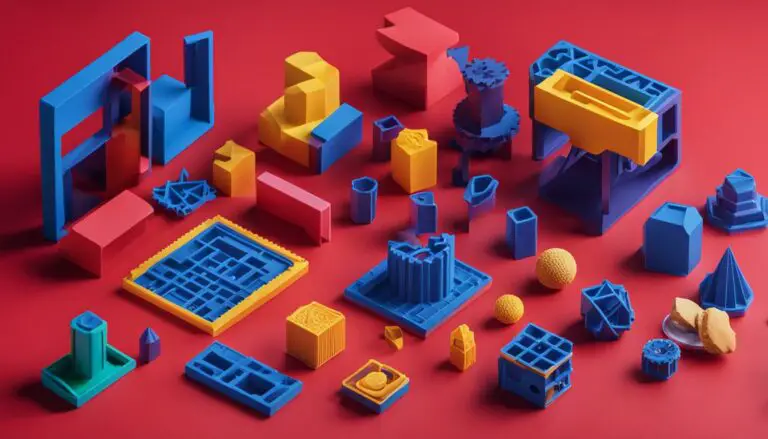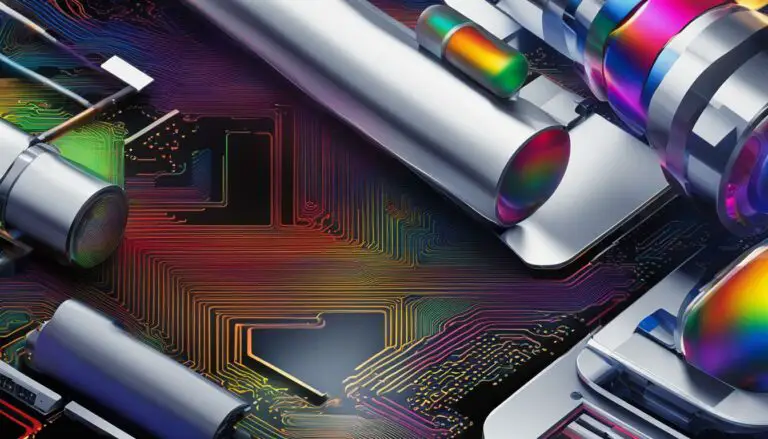How To Master 3D Drawing Easy In Easy Steps
Originally posted on December 3, 2023 @ 11:30 pm
In this article, we will guide you through a simple process to become proficient in 3D drawing, regardless of your experience level. Whether you want to learn the basics or challenge yourself with advanced methods, we have everything you need.
Starting with the basics, we’ll guide you through the process of drawing a 3D box. By understanding the principles of perspective and depth, you’ll be able to expand your skills and draw various shapes, objects, and even realistic scenes.
Not only will we provide step-by-step instructions, but we’ll also share valuable tips and techniques to enhance your 3D drawing abilities. With practice and dedication, you’ll be amazed at what you can achieve.
Key Takeaways:
- Master 3D drawing by starting with simple shapes like a box or cube.
- Coloring each side of the shape helps highlight the 3D perspective.
- Experiment with different objects and outlines to create depth in your drawings.
- Study lighting and shadows to add realism to your 3D drawings.
- Practice various techniques like blind contour drawings to improve your skills.
With these easy steps and valuable tips, you’ll be on your way to mastering 3D drawing in no time. So grab your pen and paper, and let’s unlock your creativity with the fascinating world of 3D drawing!
Method 1: Drawing a 3D Box
Mastering the art of 3D drawing can be easy and fun, especially when you start with the basics. One of the simplest methods to create a 3D effect is by drawing a box. This method lays the foundation for understanding perspective and depth in your drawings. Follow these step-by-step instructions to draw a realistic-looking 3D box:
- Begin by drawing a square as the front face of the box and another square as the back face. Make sure the squares are of equal size and parallel to each other.
- Connect the corners of the squares to create the sides of the box. These lines will create the illusion of depth and solidity.
- Erase any unnecessary lines and refine the shape of your box. Ensure that the lines are clean and crisp.
- To enhance the 3D effect, color each side of the box with different shades. Use lighter colors for the sides closer to the light source and darker colors for the sides in shadow.
Once you have mastered drawing a 3D box, you can apply the same principles to create other shapes and objects with depth. Experiment with different colors and shading techniques to add realism to your drawings.
“Drawing a 3D box is a great way to understand the fundamentals of perspective. It’s a basic technique that lays the groundwork for more complex 3D drawings.” – Artist and instructor, Jane Smith
By following this method and practicing regularly, you’ll soon be able to create impressive 3D drawings that jump off the page. Remember to start with simple shapes and gradually progress to more complex objects. Let your creativity soar as you explore the endless possibilities of 3D drawing!
| Benefits of Method 1: Drawing a 3D Box |
|---|
| Easy to learn and understand |
| Foundation for creating more complex 3D drawings |
| Improves understanding of perspective and depth |
| Allows for creative experimentation with colors and shading |
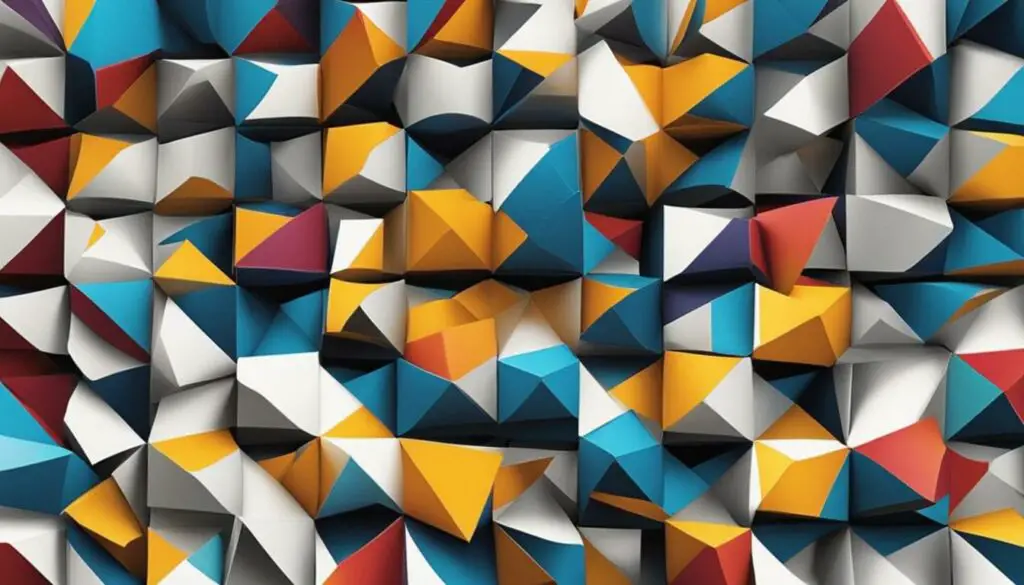
Next Steps: Exploring 3D Drawing Techniques
Now that you have mastered the basics of drawing a 3D box, you can explore more advanced techniques to take your skills to the next level. In the next section, we will introduce Method 2: Drawing Objects with Simple Outlines. This method focuses on using clear and simple outlines to create 3D effects. Stay tuned for more tips and tricks to enhance your 3D drawing abilities!
Method 2: Drawing Objects with Simple Outlines
To add more depth and dimension to your 3D drawings, you can use a method that involves drawing objects with simple outlines. This technique allows you to create the illusion of 3D by mimicking the shape of the object and adding shading and highlights.
Start by choosing an object with a clear and simple outline, such as a hand, a banana, or a doughnut. Draw or trace the outline of the object on a piece of paper. This will serve as the foundation for your 3D drawing.
Next, draw horizontal, parallel lines across the page, excluding the area inside the shape. These lines will represent the different planes and surfaces of the object. Connect curved lines to the outline, following the contours of the object. This will help create the three-dimensionality of the drawing.
“Drawing objects with simple outlines allows you to focus on the basic shapes and forms, which are the building blocks of 3D drawings.”
Once you have outlined the object and added the relevant lines, you can start shading and adding highlights to create depth. Pay attention to the light source and imagine where the shadows and highlights would fall on the object. Use hatching, cross-hatching, or stippling techniques to add shading and create a realistic 3D effect.
Remember to practice and experiment with different objects and shading techniques to improve your 3D drawing skills. The more you practice, the more confident and proficient you will become in creating stunning 3D drawings.
| Pros of Method 2: Drawing Objects with Simple Outlines | Cons of Method 2: Drawing Objects with Simple Outlines |
|---|---|
| Easy to learn and understand | May not be suitable for complex objects |
| Allows you to focus on basic shapes and forms | Requires practice to master shading and highlighting |
| Can be used for a variety of objects | May not capture intricate details |
Method 3: Drawing Realistic Objects with Depth
Mastering the art of 3D drawing goes beyond simple shapes and outlines. Method 3 involves capturing the realistic depth and perspective of objects. By studying subjects and understanding how their elements relate to each other, you can create drawings that truly come to life.
One important aspect of Method 3 is incorporating a horizon line into your drawings. This line represents the viewer’s eye level and adds a sense of distance to the composition. Additionally, by using a vanishing point, where lines converge and objects appear to vanish into the distance, you can create a more accurate representation of depth.
Lighting and shadows play a crucial role in bringing your 3D drawings to life. By observing how light interacts with objects in real life, you can accurately depict highlights and shadows in your drawings, adding a sense of depth and dimension. Take the time to study different lighting conditions, such as direct sunlight or subtle ambient lighting, to improve your ability to portray realistic objects.
Perspective Training
To further enhance your 3D drawing skills, consider incorporating transparent sheets or plexiglass into your practice. Using these materials, you can experiment with foreshortening and perspective. By drawing objects on separate layers and stacking them, you can create a dynamic and visually engaging composition.
Blind contour drawings are another helpful exercise for training your eye to see objects in three dimensions. By drawing an object without looking at your paper, you can develop a deeper understanding of its form and perspective. This technique allows you to let go of preconceived notions and draw what you truly see.
| Benefits of Method 3: Drawing Realistic Objects with Depth | Basic 3D Drawing Techniques |
|---|---|
| Creates more lifelike and realistic drawings | Enhances understanding of depth and perspective |
| Allows for more accurate depiction of lighting and shadows | Improves observational skills |
| Develops proficiency in foreshortening and perspective | Encourages creative experimentation |
By incorporating Method 3 into your 3D drawing process, you can take your artwork to the next level. Through the study of realistic objects and the application of basic techniques, you will gain a deeper understanding of depth and perspective. Remember to practice regularly, experiment with different subjects and lighting conditions, and most importantly, have fun unleashing your creativity in 3D drawing.
Tips for Enhancing Your 3D Drawing Skills
Looking to take your 3D drawing skills to the next level? Here are some tips and techniques that can help you improve and enhance your drawings:
Experiment with Different Exercises
To train your eye to see objects in three dimensions, try different exercises like blind contour drawings. With blind contour drawings, you focus on the outlines of objects without looking at your paper. This exercise helps you observe shapes and proportions more accurately, leading to better 3D drawings. Additionally, using plexiglass or transparent sheets can help you understand perspective and foreshortening, enabling you to create more realistic and dynamic drawings.
Play with Art Mediums and Textures
Exploring a variety of art mediums and textures can add depth and dimension to your 3D drawings. Experiment with different pencils, pens, or markers to create varying line weights and shading effects. Consider incorporating mixed media techniques like collages or using unconventional materials to add texture and visual interest to your drawings.
Add More Complex 3D Shapes
Once you feel comfortable drawing basic 3D shapes, challenge yourself by adding more complex forms to your drawings. Explore drawing spheres, cylinders, pyramids, or even intricate architectural structures. This will help you develop a better understanding of form, structure, and perspective.
| Exercise | Description |
|---|---|
| Blind Contour Drawings | Focus on the outlines of objects without looking at your paper. This exercise helps develop better observation skills. |
| Plexiglass or Transparent Sheets | Use transparent sheets or plexiglass to learn perspective and foreshortening, allowing for more accurate 3D drawings. |
| Experiment with Art Mediums | Try different pencils, pens, or markers to vary line weights and shading effects, creating depth and dimension in your drawings. |
| Add Complex Shapes | Challenge yourself by drawing more complex forms like spheres, cylinders, or architectural structures to enhance your understanding of form and perspective. |
By incorporating these tips and techniques into your drawing practice, you can elevate your 3D drawings to new heights. Remember, patience and practice are key, so keep experimenting, exploring, and enjoying the process. Happy drawing!
Conclusion
Mastering the art of 3D drawing is not as difficult as it may seem. By following step-by-step methods and incorporating simple techniques, you can easily create stunning 3D drawings with depth and perspective. Whether you are a beginner or have some experience, these easy-to-follow tutorials will help you become proficient in 3D drawing.
Throughout this guide, we have covered various methods to create 3D drawings. From drawing a basic 3D box to capturing realistic objects with depth, each method offers a unique approach to enhance your skills. By experimenting with different exercises and art mediums, you can unlock your creativity and add a touch of individuality to your drawings.
Remember, practice is key when it comes to mastering any skill. Take your time, be patient, and allow yourself to make mistakes. Through dedication and perseverance, you will see significant improvement in your 3D drawing abilities. So go ahead, unleash your creativity, and have fun exploring the fascinating world of 3D drawing!
FAQ
How can I master 3D drawing easily?
To master 3D drawing, start by drawing a square as the front of your box and a second square as the back of the cube. Connect the corners of the squares to create the top, bottom, and sides of the cube. Color each side of the cube to highlight the 3D perspective. Once you understand the principles of drawing a 3D box, you can move on to drawing other shapes such as rectangles, triangles, stars, or abstract shapes.
What is the first method for drawing 3D objects?
Method 1 involves drawing a 3D box by starting with a square as the front of the box and a second square as the back. Connect the corners of the squares to create the illusion of depth and solidify the shape of the box. Erase unnecessary lines and color each side of the box to enhance the 3D effect. This method can be expanded to draw other shapes like rectangles, triangles, and abstract shapes.
How can I draw objects with simple outlines in 3D?
Method 2 involves choosing an object with a clear and simple outline, such as a hand, a banana, or a doughnut. Draw or trace the outline of the object on a piece of paper. Then, draw horizontal, parallel lines across the page, excluding the area inside the shape. Connect curved lines to the outline, mimicking the shape of the object. Trace over the lines with ink and erase the pencil outline to achieve a 3D effect.
What is the third method for drawing 3D objects?
Method 3 involves studying a subject to understand how its elements relate to each other in terms of depth and perspective. Start by drawing a horizon line for objects that require a sense of distance. Incorporate a vanishing point where lines converge to represent objects disappearing into the distance. Study lighting and shadows to accurately depict the 3D form of objects. Use transparent sheets or do blind contour drawings to train your eye for perspective.
How can I enhance my 3D drawing skills?
To enhance your 3D drawing skills, try different exercises, such as blind contour drawings, to train your eye to see objects without preconceptions. Use plexiglass or transparent sheets to learn perspective and foreshortening. Experiment with different art mediums and textures to add depth and realism to your drawings. Consider adding more 3D shapes to your drawings and explore creative ways to make them unique.

